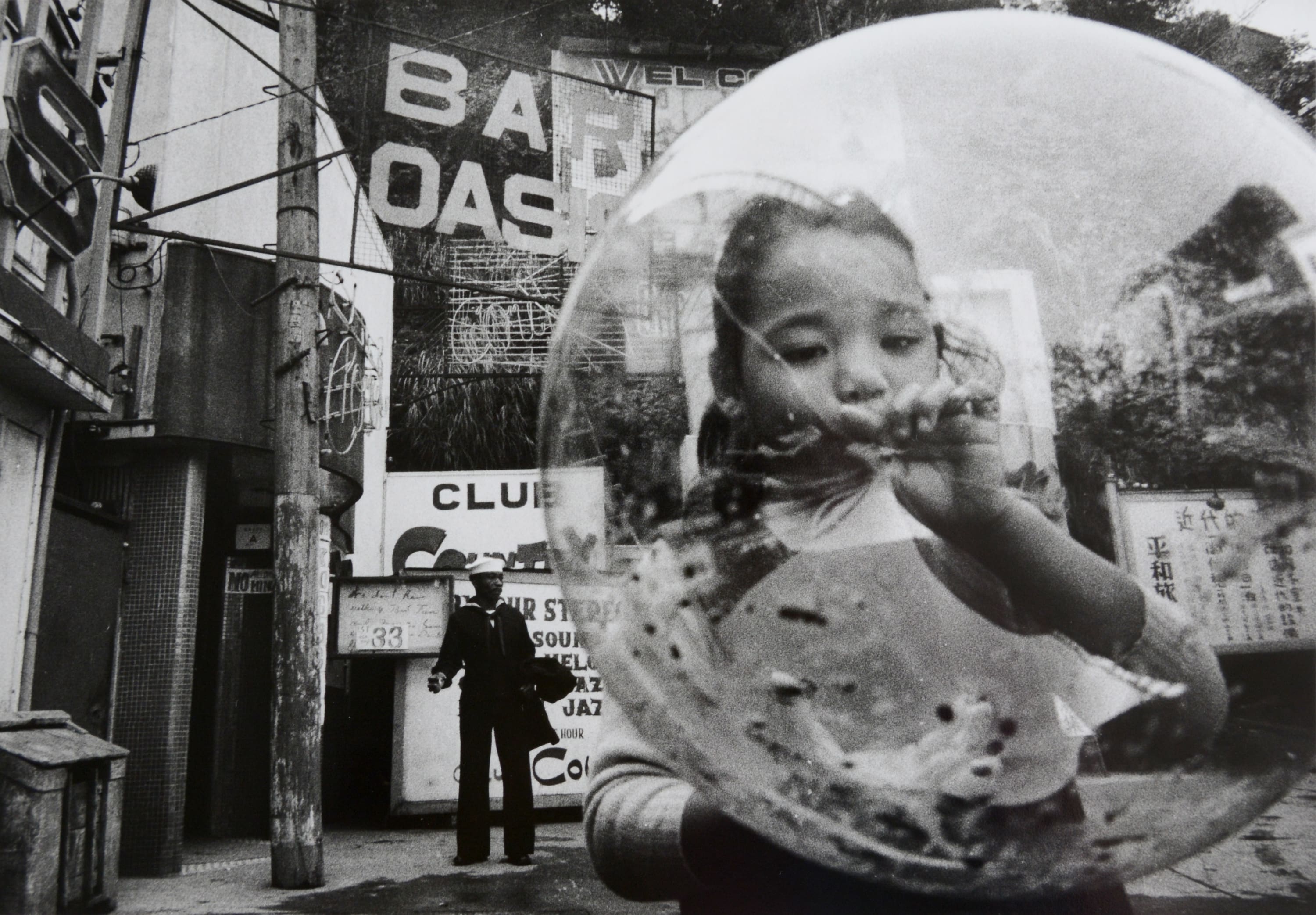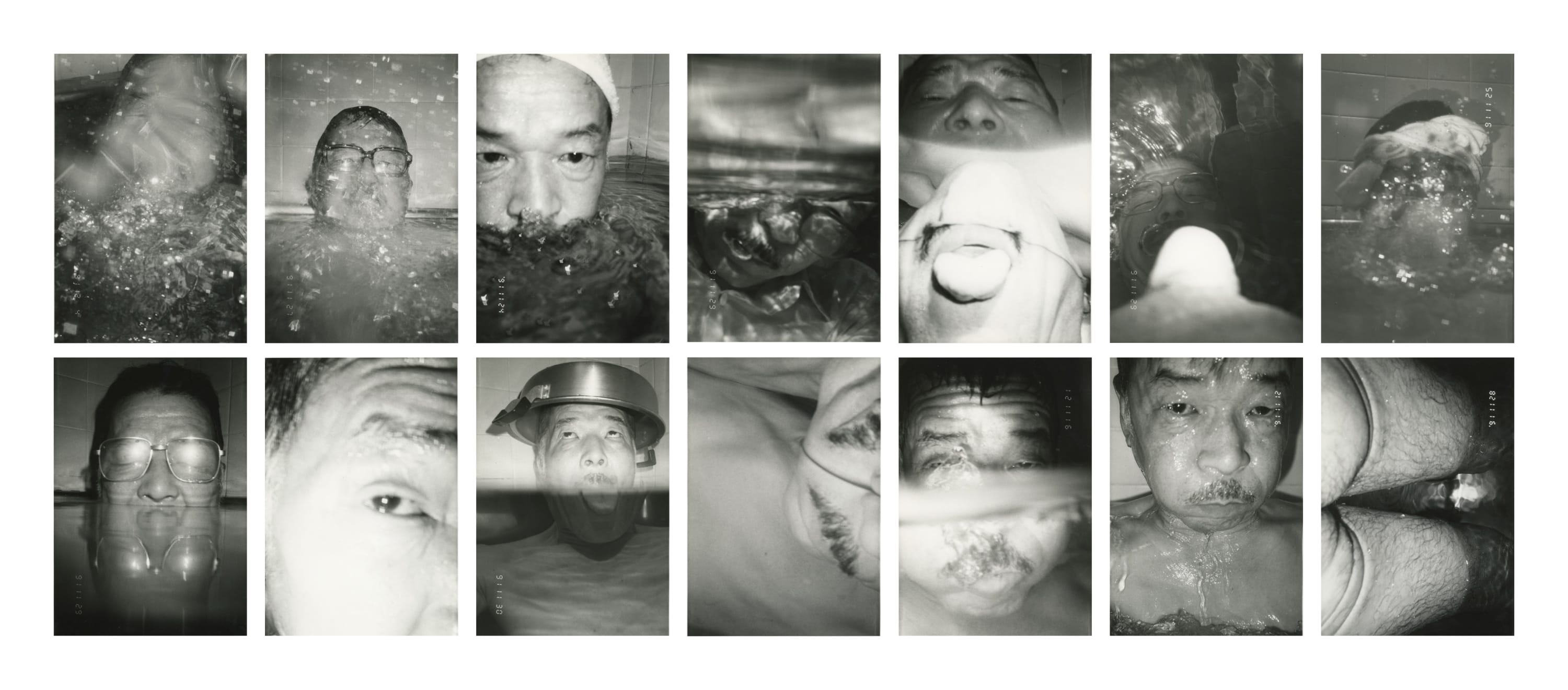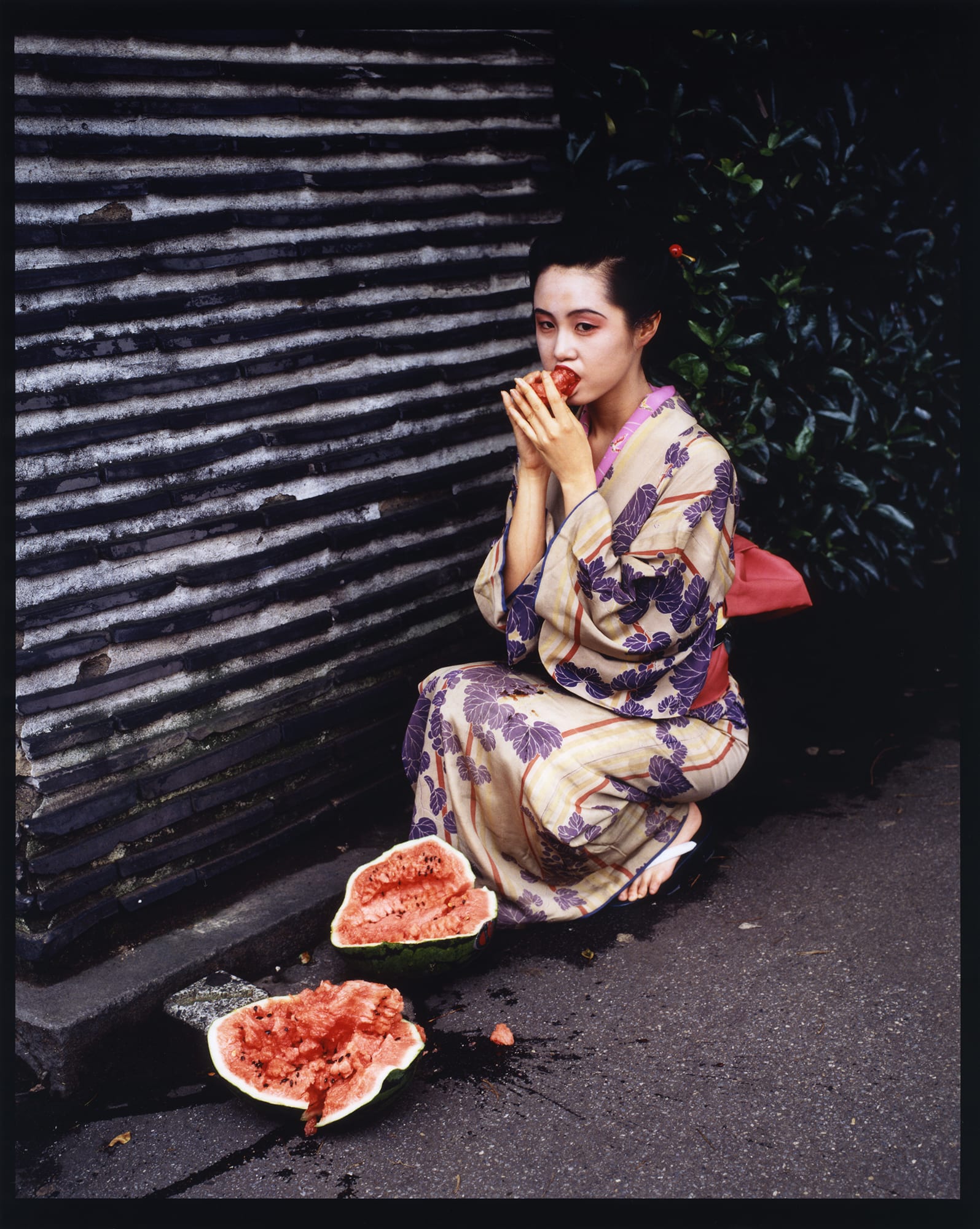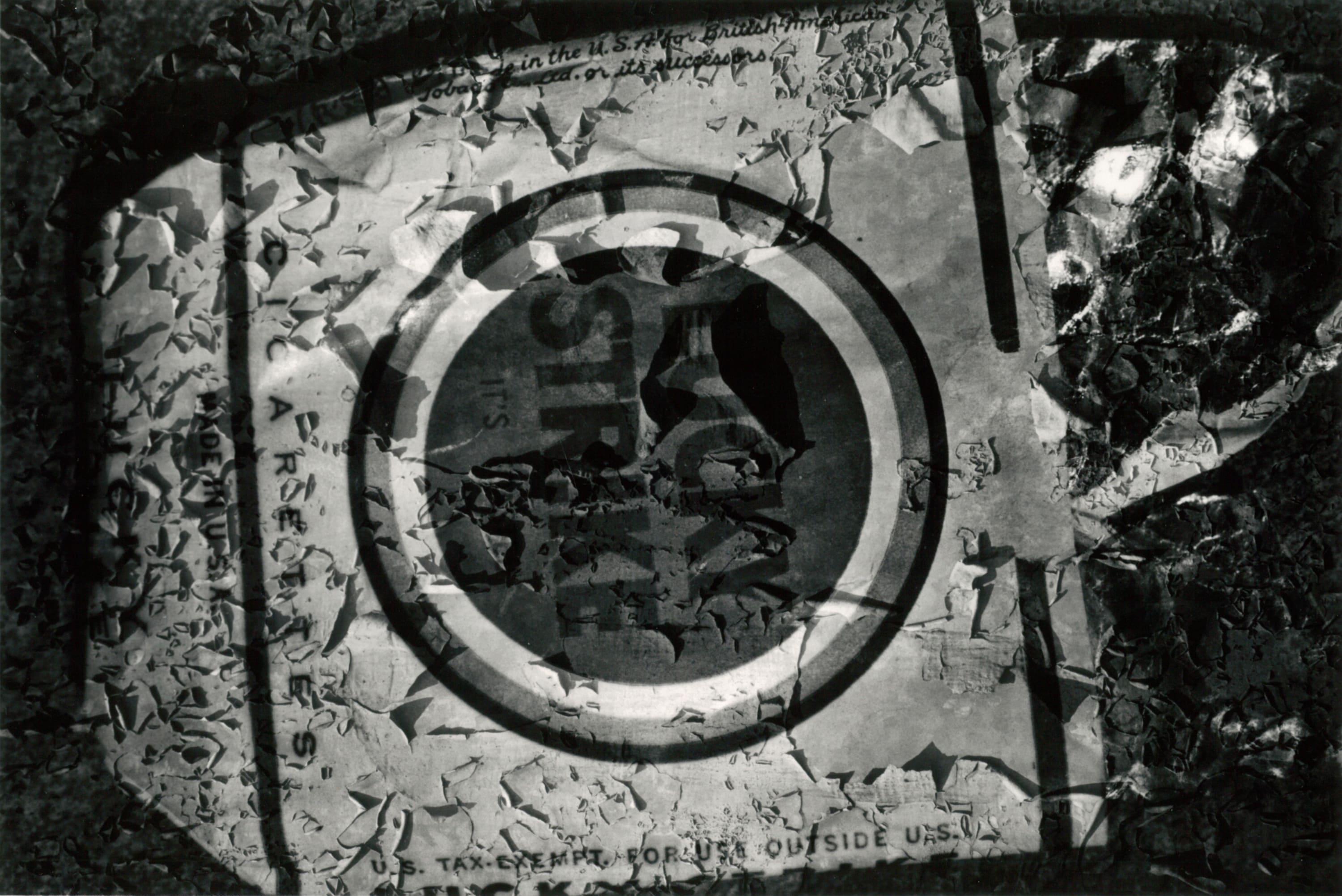We are absolutely delighted to be exhibiting key works by members of the iconic generation of Japanese photographers who rose to prominence during the post-war period, at Frieze Masters.
These pioneering artists defined themselves in opposition to the schools of Pictorialism and Documentary photography that had prevailed in the first half of the 20th century. The fruits of this generation’s efforts to innovate new modes of expression, rejecting ideology in favour of a fresh subjectivity and questioning the nature of photographic truth itself, are now lauded as heralding Japan’s ‘Golden Age of Photography’, and this work has become a focal point for scholars and collectors alike.
-

Yokosuka Again, #43, 1981
Signed, titled, and dated by the artist verso. Vintage silver gelatin print. Paper size: 77 x 105 cmYokosuka Story (1977), by the Japanese photographer Ishiuchi Miyako, comprises forty vintage black and white prints which are typically displayed in a large grid. As the title suggests, the work depicts the town of Yokosuka, a small port in Japan where Ishiuchi grew up during the 1950s and 1960s, when the town was the site of a large American naval base.
In these years of military occupation the town was infiltrated by American culture and in turn the visual landscape reflected this struggle between local and foreign, past and present and the uncertainty of Japan’s future identity.
Like other slightly older Japanese photographers associated with the ‘Provoke’ movement, such as Shōmei Tōmatsu and Daido Moriyama, with whom she worked, Ishiuchi was part of the post-war generation who used their cameras to record and explore what it meant to be Japanese at this pivotal moment in history. The Provoke movement experimented with photographic techniques in order to offer a more subjective and radical vision of society in Japan post-Hiroshima, focusing on the alienation and disaffection characterising urban life.
The series Yokosuka Again, places Ishiuchi’s camera at the epicenter, or root cause, of her childhood anxieties. She enters Honchō, a neighborhood popular with American soldiers and sex workers to this day, and documents the bars and clubs previously forbidden to her as a child. The images mark her willingness to face the trauma of her past as well as the US military base that keeps the city of Yokosuka frozen in time. Interior shots of the Enlisted Men’s Club, a run-down hangout of soldiers demolished in 1990, as well as the dark silhouette of a US naval ship in “Yokosuka Again #43” appear as specters of the city’s wartime past and militarized present.
-
Ishiuchi Miyako on post-Hiroshima Japan. Video © TATE
-
"Sometimes a photographer is a passenger, sometimes a person who stays in one place. What he watches changes constantly, but his watching never changes."
— Shōmei Tōmatsu
-

Untitled, from Chewing Gum and Chocolate, Yokosuka, 1959
Signed and dated verso by the artist. Silver gelatin print, printed 2003. Image size: 21.5 x 30.9 cmLeading the line of photographers who became deeply concerned with the national trauma of the war – the way it scarred flesh and ruined cities – was Shōmei Tōmatsu.
He pioneered a revolutionary style of passionate subjectivity which was associated with VIVO, a short-lived yet influential collective that operated at the epicentre of Japanese photography in the 60s. Like most of his generation, Tōmatsu was both fascinated and repulsed by the sleazy culture that sprang up around cities and military bases in Japan. With an unblinking, often jaundiced eye, Tōmatsu photographed troops tossing sticks of gum and chocolate, raw strip club encounters and youthful rebellion.
The chaotic “Coca-colanisation” of Japan is no more symbolically freighted than in the 1959 display of a young girl blowing a bubble in the segregated "Harlem" section of Yokosuka, a naval soldier eyeing up institutions of dank debauchery in the background beneath gigantic, ill-shaped letters. As always with Tōmatsu, we are never far from the impression of despair.
Tōmatsu’s photography has persistently found new ways to articulate the lingering traces of American influence which he perceived across Japan. His 1960 series Occupation, documented Americanization in Japanese cities whilst Hiroshima-Nagasaki Document 1961, ranks amongst the earliest attempts authorised to record the nuclear devastation from within the restricted zone.
Text by Alex Merola -

Bukubuku, 1991
Artist's estate wet stamp verso. Fourteen unique vintage silver gelatin prints. Image size: 24.3 x 16.3 cm eachA unique and remarkable set of prints, Bukubuku (Blowing Bubbles) was the last series Fukase completed before the debilitating fall which left him in a coma for 20 years and later cost him his life. This extraordinary body of work is a series of self-portraits made in his bathtub with a waterproof camera (Nikonos) and was shown only once at Shikei (Private View) 1992 (February 1992), with the prints pinned to the wall in an installation-minded trilogy along with Berobero (Sucking) and Hibi (Fractures). Regarded as Fukase’s last great body work, Bukubuku has been described as a whimsical if somewhat morbid game of solitaire that charts new territory for the photographic self-portrait, a visualisation of madness and death. Frieze Masters 2022 will be the first time that these works have been seen in public since 1992.
The last of these photographs was taken on December 8, 1991. Fukase wrote: "This evening I shall put the final touch to 'Bukubuku. [...] I've taken enough photos and there's no doubt, this series will be a global masterpiece. Even if I do say so myself. 'Berobero' took me a year; 'Bukubuku' only a month. Both have been forms of exorcism, but what will be my next demon? [...] All my life, I've been bewitched by photography's demons."
Tomo Kosuga, MASAHISA FUKASE, 2018
-
-

COLOURSCAPES, TOKYO, 1991
Signed in silver ink recto. Cibachrome print, printed later. Paper size: 60 x 50 cmThis is Araki's best-known image. This print was made for a close friend of his using the Cibachrome process, one of the most beautiful and stable colour printing methods which disappeared from the market in 2000. The subtlety of the colours and the unusual signature on the recto, make this early print a very special object. Araki brings a new meaning to 'snapshot' photography. Covering subjects as diverse as portraits, dying flowers, Tokyo street scenes (some set up and others simply caught), bars, clubs and one of his best-known subjects, kinbaku (the Japanese art of rope tying), Araki continues to explore the changing face of contemporary Japan. He had astounded audiences worldwide, confronting them with a plethora of beautiful and often shocking images. Never willing to compromise his vision, he continually defies the censorship laws in his native country, using photography as a way of enhancing and recording his strong emotional reactions to life and death. Araki's use of richly saturated colour and strong black and white imagery is instantly recognisable. The explicit sexual overtones of this image are typical of his unique style. -

Woman of Sankt Pauli, from Sei Naru Sekai - Sacre Atavism, 25th June 1969
Signed in pencil in English verso, Titled in Japanese in pencil verso. Vintage silver gelatin print. Paper size: 25 x 30.5 cm"Kawada was one of the most influential Japanese photographers of the 1960s, and is maybe best known for his seminal book Chizu (The Map), which was designed as a printed requiem for the dead of Hiroshima. Published in 1965, twenty years after an atomic bomb destroyed the city, it has rightly become one of the most important and sought after photography books ever produced. It was republished in 2005 by Nazraeli Press. This portrait, included in another of Kawada's books, Sacre Atavism (1971), was taken in Hamburg, Germany. It has a visceral quality that I look for in a street portrait. What makes it even more exceptional is that it is not posed. His acute eye, timing and printing style has kept Kawada at the forefront of Japanese photography, even though he no longer practises."
-

KIKUJI KAWADA, LUCKY STRIKE, 1960-65
Signed and titled in pencil verso. Silver gelatin print. Printed 1990. Paper size: 55.6 x 45.6 cm"My first published photo book, The Map, took me five years to complete, beginning in 1960. In late 1961 a solo show with work from the series was held at Fuji Photo Salon in Tokyo, organised in three parts.
The first featured a ruined castle that was blown up intentionally by the Japanese army during the Second World War. The second comprised photographs taken a decade after the atomic bomb exploded in Hiroshima. They showed the stains and flaking ceilings of the Atomic Bomb Dome, the only structure left standing at the heart of the detonation zone.
The third part concerned Tokyo during the period of economic recovery: images of advertising, scrap iron, the trampled national flag and emblems of the American Forces such as Lucky Strike and Coca-Cola, all twisted together, their order shuffled again and again. Some appeared as a montage to be presented as a metaphor. I dare not say the meaning of it."
Kikuji Kawada in conversation with Mariko Finch for the exhibition with Tate Modern; Conflict, Time, Photography, 2014.
-
IF YOU WOULD LIKE TO MAKE AN APPOINTMENT TO VISIT US, PLEASE CONTACT THE GALLERY AT
GALLERY@MICHAELHOPPENGALLERY.COM
+44 (0) 207 352 3649
YOU WILL FIND THIS SELECTION OF WORKS AT FRIEZE MASTERS 2022: STAND A08





